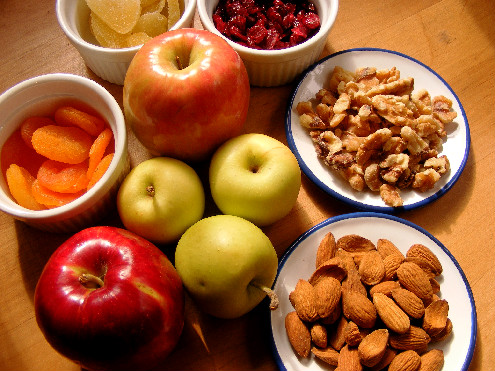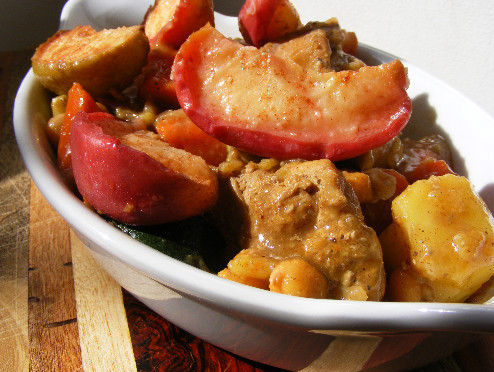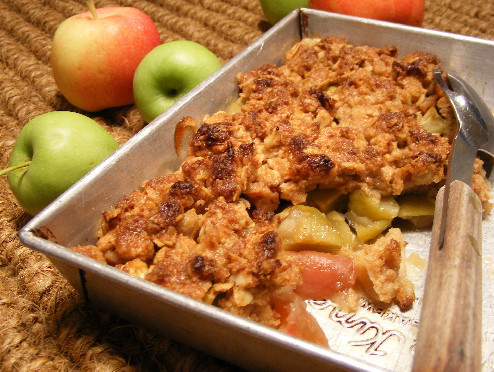Apple: Charoset – Jewish Apple Dried Fruit Nut Salad
Wednesday, October 27th, 2010Apples are not only tasty and good for you, over the thousands of years that they’ve been around, they’ve grown to have cultural and religious significance.
For instance, this Jewish apple salad – charoset is eaten during the Jewish Pesach (Passover) festival. Charoset is also spelled “charosset,” “charosses” or “haroset” and pronounced ha-ROH-ses or ha-ROH-set.
Depending on the provenance, the salad ingredients and texture will vary.
In the Ashkenazi (Eastern European) version, ingredients traditionally include apples, nuts, cinnamon, sweet red wine and honey – in a finely chopped salad spread over matzos. For the Sephardim (Mediterranean), the salad generally includes dates, other dried fruit, and spices like ginger – pureed into a paste and sometimes rolled into sticky balls eaten with sweetmeat throughout the holiday.
Charoset recipes are typically family recipes that also reflect an ethnic influence. Some recipes add bananas, pine nuts, chiles, cilantro or other local ingredients.
However, whether the salad is finely chopped or paste-like – it symbolically represents the mortar used by Hebrew slaves to build ancient Egypt and the salad is one of six items on the Sedar Plate along with bitter herbs.
Since I’m not Jewish, I’m inclined to eat this salad throughout the fall and winter months, when apples are at their peak and dried fruit is abundant. This version is more tart than sweet, made sweeter with the sweet red wine. However, I think the salad would also be lovely using olive oil in lieu of sweet wine and adding some fresh parsley and cilantro for a more savory salad. Or, I may make it simply using orange or apple juice and eat the leftovers in my oatmeal.
I’d love to hear your thoughts about apple salads or your family’s charoset version.
Tidbits on Apples:
- There are over 7,500 known varieties of apples.
- In some cultures, an apple is a symbol of immortality, love or sexuality. For example, throwing an apple at a person’s bed was an invitation for something racier than apple pie in ancient Greece.
- Some folklore credits apples with increasing a woman’s chances of conception.
- Apples have also been rubbed on skin to remove birthmarks.
- The proverb an apple a day keeps the doctor away, has some truth to it primarily because it helps aid digestion.








